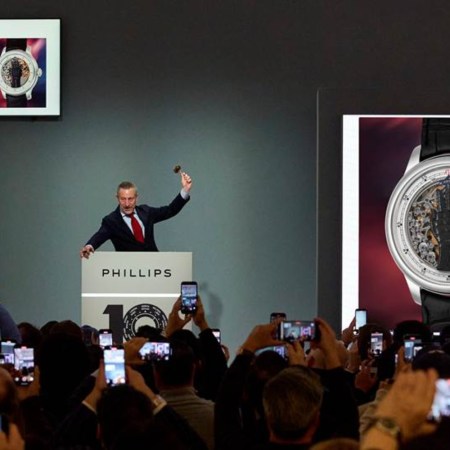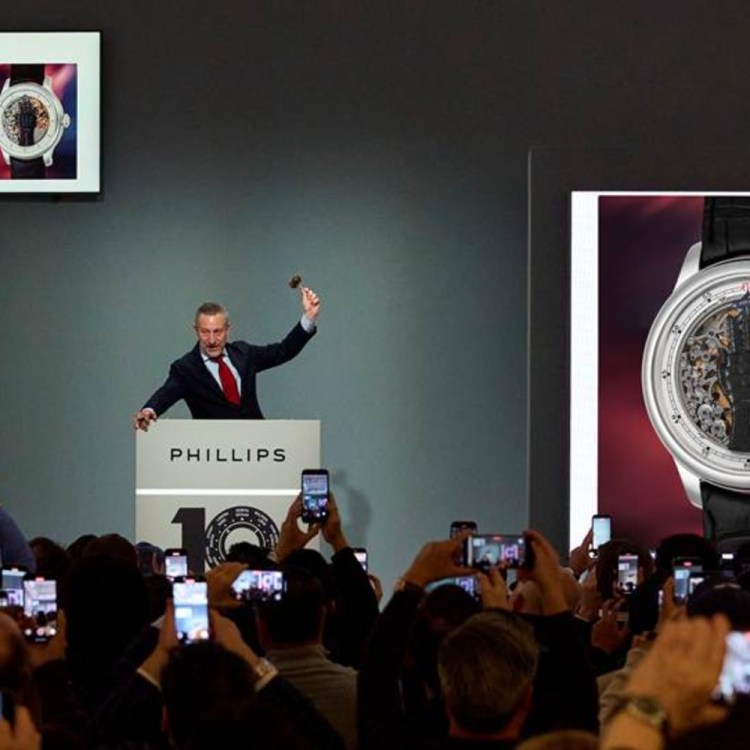Licensing is an effective tool in the watchmaker’s playbook: put a 007 logo on the second hand or Mickey Mouse on the dial, and you’re sure to attract a devoted niche audience. Of course, this is all aesthetics: an Omega won’t give you James Bond’s powers of seduction any more than a Timex will transform you into a cartoon mouse worth a hundred-some-odd billion dollars.
But when the logo in question pays homage to real equipment used by real people — as is the case with Luminox’s Navy SEAL Colormark — there is real value and performance at stake.
It’s an accessibly priced timepiece (currently $260, down from an original $490), with some of the biggest shoes you can attempt to fill: the Navy freakin’ SEALs. To figure out whether it lives up to its namesake, you have to go back to the beginning — and essential distinguishing factor — of all Luminox watches (hint: that name is Latin for “light” and “night”).
“One day while browsing through a catalog, [Barry] Cohen saw an item that piqued his interest,” writes WatchTime in a profile of the company’s co-founder. “It was an unassuming watch made by a company in Bern, Switzerland, called MB-Microtec … [it had] tiny tubes on the dial and hands filled with a gaseous substance that glowed in the dark.”
That substance is a radioactive isotope of hydrogen called tritium. As the New York Times noted in 1988, it was once used to make nuclear bombs more powerful. For Cohen’s purposes, though, it merely represented a way to read your watch in the dark. And give you a talking point at parties: If you think James Bond’s laser watch is cool, wait till you hear what this does …
Luminox’s SEAL Colormark includes 16 phosphorescent-painted tubes filled with tritium on the hours, hands and bezel (all ice blue except the 12-hour marker, which is orange so you can keep your bearings even in pitch blackness). The illumination lasts 25 years, with no battery or light source required. Because the isotope undergoes radioactive decay, it will diminish over time, though.
As WatchTime writes, naval officer Nick North came across Luminox in 1993 and, being “in RDT&E (Research, Development, Testing and Evaluation) for the Navy SEALs,” had them make a timepiece to test for field use. After heating it in an oven, freezing it, submerging it to severe pressure levels and wearing it in action, they were ordered for official SEAL use.
Mind you, this Colormark is not that watch. Unless you were a Navy SEAL in the early ‘90s, you’re probably not going to get that watch — the closest you’ll get today is the Original Navy SEAL 3001.
So which one is right for you? Let’s review.
Similarities: As with all Luminox watches, both feature a completely Swiss-made quartz movement. In living up to the Navy SEAL pedigree, they also both feature excellent dive feature: the same water resistance rating of 200 m (600 ft), a uni-directional diver bezel, and a carbon-compound case with hardened mineral crystal.
DIfferences: $115, in favor of the Colormark. The Colormark also boasts an updated blackout design, along with a slightly larger case (44mm and 56 g, vs. he 3001’s 43mm and 43 g) and accentuated ridges on the bezel, which adds up to a slightly more rugged look than its predecessor. It also comes with two band options: a carbon-reinforced polycarbonate and standard rubber.
In conclusion, while you won’t find the Colormark on the wrists of any actual SEALs, it’ll suffice for all your less life-threatening sea, land and air adventures.
This article appeared in an InsideHook newsletter. Sign up for free to get more on travel, wellness, style, drinking, and culture.






















